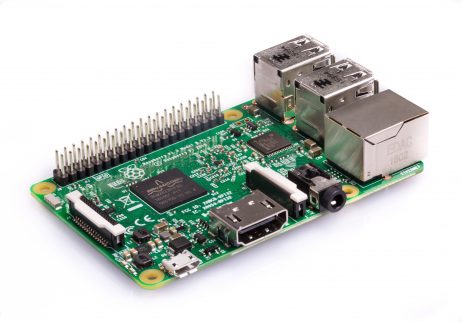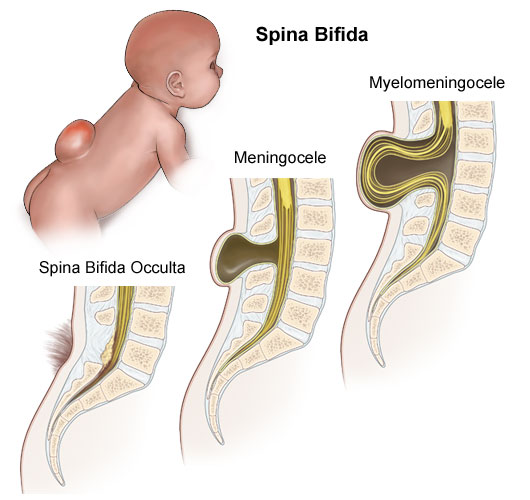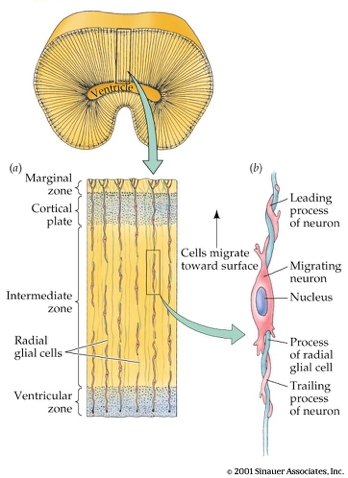- Wrap-up on brain evolution
- How the human brain develops
2017-10-05 13:25:48
Today's Topics
Selection pressures
- Natural and sexual selection for
- Traits that improve reproductive success
- Physical AND psychological traits
- Hardware and software
Samsung Galaxy S8

Apple iPhone X

Virtues of big phones/brains
- More storage
- More processing capacity
- Better sensors
- Better output
- More, better apps
- Do more, faster
Costs of big brains
- Long time to build
- Lots of energy to nourish/maintain
- Long time to program/train/educate
- Head/neck must be strong enough to carry
- How to connect brain/body parts widely, but process info quickly
Does size matter? Maybe not so much.


A new view (Herculano-Houzel 2016)
- Number of neurons in cerebral cortex makes humans "special"
| Species | # cortical neurons | cortical mass (g) |
|---|---|---|
| Human | 16 B | 1233 |
| Chimpanzee | 6 B | 286 |
| Elephant | 5.6 B | 2800 |
| Baboon | 2.9 B | 120.2 |
A new view (Herculano-Houzel 2016)
| Species | # cortical neurons | cortical mass (g) |
|---|---|---|
| Giraffe | 1.7 B | 398.8 |
| Rhesus | 1.7 B | 69.8 |
| Pig | 303 M | 42.2 |
| Rabbit | 71 M | 4.4 |
But humans follow scaling rules typical of other animals
# of cortical (or its equivalent) neurons predicts "cognition"?
How did human brain get this way?
- Build upon mammalian/primate norms
- Add neurons to cerebral cortex
- More efficient energy intake
- calories/hr foraging vs.
- cooking?
- Prolonged (in time) pattern of development
- Specialized pattern of development
- Significant time post-natal/pre-reproductive (childhood)
Human brain development take homes
- Prenatal
- Neuro- and gliogenesis
- Migration
- Synaptogenesis begins
- Differentiation
- Apoptosis
- Myelination begins
- Infant gene expression ≠ Adult
Human brain development take homes
- Postnatal
- Synaptogenesis
- Cortical expansion, activity-dependent change
- Myelination
- Prolonged period of postnatal/pre-reproductive development, i.e., childhood (Konner 2011)
Neurulation
Formation of neural tube (neurulation)
- Three embryonic tissue layers: Ectoderm, mesoderm, endoderm
- Ectoderm folds on itself to form neural tube
- ~20 days post-fertilization
- Neural tube becomes
- Ventricles (and cerebral aqueduct)
- Central canal of spinal cord
- rostral/caudal axis of CNS
Neurulation
- Failures of neural tube closure
- Spina bifida
- Anencephaly
Spina Bifida
Neurogenesis and gliogenesis
- Stem cells along ventricles
- Symmetric cell division
- Daughter cells can also divide, increases # of proliferative cells
- Asymmetric cell division
- Daughter cells post-mitotic (don't divide)
Radial glia
Cell migration
Radial unit hypothesis
Radial unit hypothesis
- "Units" along rostral/caudal and superior inferior axis determine "fate" of associated CNS region
Migration
Migration
Glial migration
Axon growth cone
Axons follow
- Chemoattractants
- e.g., Nerve Growth Factor (NGF)
- Chemorepellents
- Receptors in growth cone detect chemical gradients
Differentiation
- Neuron vs. glial cell
- Cell type
- NTs released
- Where to connect
Differential gene expression by cortical area
Prefrontal vs. Other Ctx
Synaptogenesis

Postnatal patterns of synaptogenesis

Proliferation, pruning
- Early proliferation
- Later pruning
- Rates, peaks differ by area
Apoptosis
- "Programmed" cell death
- 20-80%, varies by area
- Spinal cord >> cortex
Apoptosis and cortical expansion
Synaptic rearrangement

Myelination

Myelination
- Neonatal brain largely unmyelinated
- Gradual myelination, peaks in mid-20s
- Spinal cord before brain
- Sensory before motor, except in dorsal/ventral roots of PNS
Diffusion Tensor Imaging (DTI)
- Structural MRI measure
- Diffusion of water molecules
- Diffusion in a specific direction (aniosotropy) -> white matter integrity
DTI
Myelination across human development
Myelination changes "network" properties
Synaptic rearrangment, myelination change cortical thickness
- [Gogtay2004-bq]
- Thickness of cerebral cortex declines
- Synaptic pruning?
- Areas differ
[Gogtay2004-bq]
Human brain development take homes
- Prenatal
- Neuro- and gliogenesis
- Migration
- Synaptogenesis begins
- Differentiation
- Apoptosis
- Myelination begins
- Infant gene expression ≠ Adult
Human brain development take homes
- Postnatal
- Synaptogenesis
- Cortical expansion, activity-dependent change
- Myelination
- Prolonged period of postnatal/pre-reproductive development
Next time…
- Brain development beyond childhood
References
Hagmann, P., O. Sporns, N. Madan, L. Cammoun, R. Pienaar, V. J. Wedeen, R. Meuli, J.-P. Thiran, and P. E. Grant. 2010. “White Matter Maturation Reshapes Structural Connectivity in the Late Developing Human Brain.” Proceedings of the National Academy of Sciences 107 (44): 19067–72. doi:10.1073/pnas.1009073107.
Herculano-Houzel, Suzana. 2012. “The Remarkable, yet Not Extraordinary, Human Brain as a Scaled-up Primate Brain and Its Associated Cost.” Proc. Natl. Acad. Sci. U. S. A. 109 Suppl 1 (June). National Acad Sciences: 10661–8. doi:10.1073/pnas.1201895109.
———. 2016. The Human Advantage: A New Understanding of How Our Brain Became Remarkable. MIT Press. https://market.android.com/details?id=book-DMqpCwAAQBAJ.
———. 2017. “Numbers of Neurons as Biological Correlates of Cognitive Capability.” Current Opinion in Behavioral Sciences 16 (Supplement C): 1–7. doi:10.1016/j.cobeha.2017.02.004.
Johnson, Matthew B, Yuka Imamura Kawasawa, Christopher E Mason, Željka Krsnik, Giovanni Coppola, Darko Bogdanović, Daniel H Geschwind, Shrikant M Mane, Matthew W State, and Nenad Šestan. 2009. “Functional and Evolutionary Insights into Human Brain Development Through Global Transcriptome Analysis.” Neuron 62 (4). Elsevier: 494–509.
Konner, Melvin. 2011. The Evolution of Childhood. Belknap Press of Harvard University Press. http://www.hup.harvard.edu/catalog.php?isbn=9780674062016.
Rakic, Pasko. 2009. “Evolution of the Neocortex: A Perspective from Developmental Biology.” Nature Reviews Neuroscience 10 (10). Nature Publishing Group: 724–35. doi:10.1038/nrn2719.










